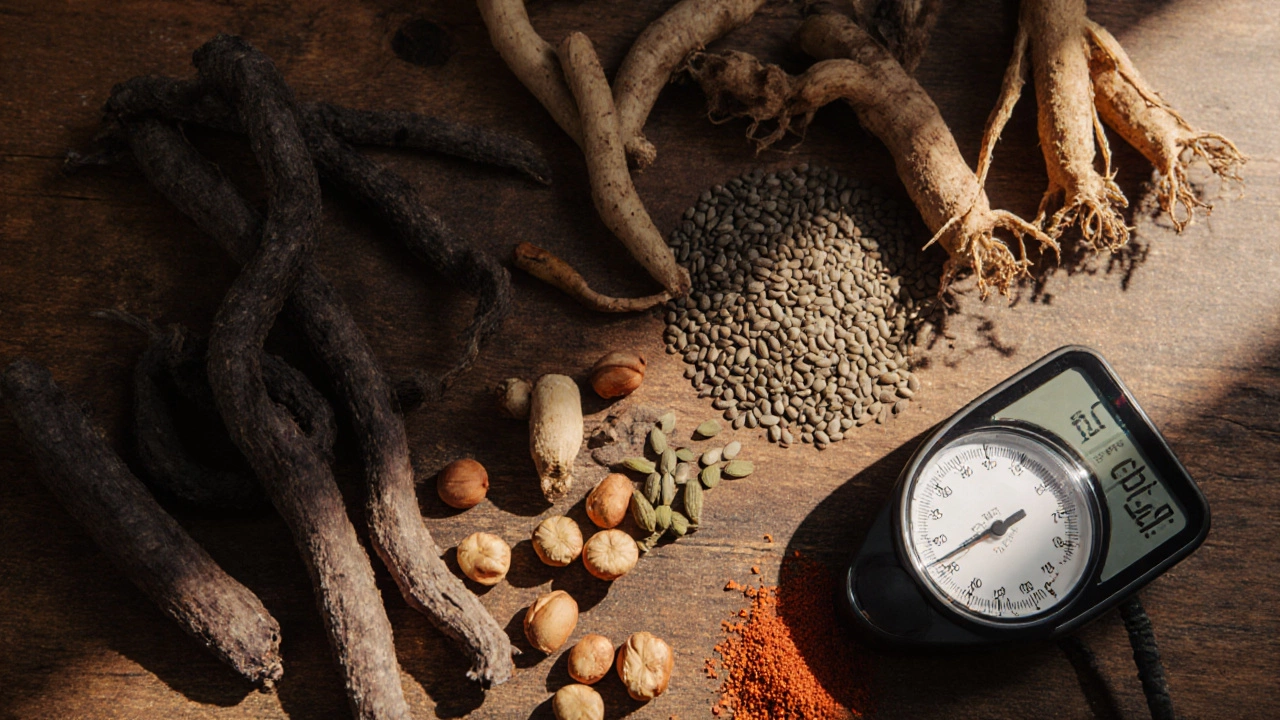Herbal Hypertension: Natural Ways to Manage High Blood Pressure
When dealing with herbal hypertension, the use of plant‑based remedies to lower elevated blood pressure levels. Also known as herbal blood pressure control, it blends traditional knowledge with modern health goals.
The condition itself, hypertension, is a leading risk factor for heart disease and stroke. Herbal medicine offers a complementary route, using bioactive compounds that can relax blood vessels and improve circulation. Meanwhile, blood pressure monitoring remains the compass that tells you whether a natural approach is working. In India, Ayurveda often serves as the framework that links herbs, diet, and daily routines together. Together these entities form a network where each piece influences the next: herbal hypertension requires understanding of hypertension, relies on herbal medicine, monitors blood pressure, and is shaped by Ayurvedic principles.
Key Herbs, Lifestyle Changes, and How They Fit Together
Herbal hypertension herbal hypertension encompasses a handful of well‑studied plants. Hibiscus tea contains anthocyanins that act as natural ACE‑inhibitors, gently lowering systolic readings. Garlic supplements boost nitric oxide, helping vessels stay relaxed. Ashwagandha, a staple of Ayurveda, reduces stress hormones that otherwise push blood pressure up. Each herb works because it targets a specific attribute of blood pressure regulation – a classic example of the semantic triple: *Herbal hypertension* includes *vasodilating herbs*.
But herbs alone don’t finish the job. Lifestyle factors are the other side of the equation. Regular brisk walking, a low‑salt diet, and adequate sleep create a baseline where herbal agents can shine. This creates another triple: *Effective blood pressure control* requires *both herbal remedies and lifestyle changes*. For many readers, the challenge is figuring out how to blend these pieces without overcomplicating daily life.
Practical tips start with a simple routine: replace one cup of coffee with a cup of hibiscus tea in the morning, add a crushed garlic clove to your dinner sauces twice a week, and set a reminder to walk for 20 minutes after dinner. Pair these steps with a salt watch – aim for less than 5 grams a day – and you’ll see the numbers on your home monitor drift down slowly but steadily. Ayurveda adds the timing element: consuming warming spices like ginger after sunrise aligns with the body’s natural pitta rhythm, further supporting blood‑pressure balance.
Safety matters, too. Herbs can interact with prescription antihypertensives, so it’s wise to check with a healthcare professional before stacking them. Also, the dosage matters; more isn’t always better. The principle here is clear: *Herbal supplements* must be used within recommended limits* to avoid side effects such as low blood pressure or gastrointestinal upset.
In the collection below you’ll find deeper dives into each of these herbs, step‑by‑step guides for integrating them into everyday meals, and real‑world stories of people who have lowered their numbers without extra pills. Use this introduction as a map, then explore the articles that break down the science, the recipes, and the precautions you need to make herbal hypertension a safe and effective part of your health toolkit.






